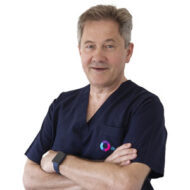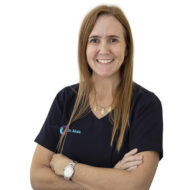Addressing Varicose Veins with
Precision and Care
Varicose veins are swollen bulging veins under the surface of the skin that can be dark purple or blue in color. Although varicose veins can occur anywhere in the legs, they most often occur in the calves and behind the knees. The function of veins is to bring blood back to the heart. Because the veins of the legs work against gravity, they contain one-way valves to prevent the blood from flowing backward as it travels back to the heart.


If the one-way valve becomes weak, some of the blood can leak back down the vein, causing the veins to become congested. This causes what is known as vein reflux, or venous reflux.
In addition to causing veins to bulge and stretch, additional unpleasant side effects may include:
-
- Heavy and tired legs
- Aching and throbbing pain
- Swelling
- Itching
- Leg cramps
- Restless Leg Syndrome
- Changes in Skin Color
Heredity is a primary factor in over 80% of varicose vein cases. Other contributing factors may include pregnancy, obesity, hormone therapy, standing or sitting for long periods of time and injury.
Two recent large studies found a significant association between varicose veins and deep vein thrombosis (DVT), and less clear potential associations with pulmonary embolism (PE) and peripheral artery disease (PAD).
The significance of these studies is that varicose veins are a common condition but may be associated with increased health risks, especially for deep vein thrombosis (DVT). DVT, pulmonary embolism (PE), and peripheral artery disease (PAD) are all vascular diseases with severe systemic effects and may be life-threatening.
About Deep Vein Thrombosis (DVT)
Deep Vein Thrombosis, or DVT, is a condition most people associate with blood clots in the legs. Some DVTs may not have any symptoms but most cause dramatic pain, swelling, and warmth in the leg. If untreated, people with extensive DVTs are at risk of developing a pulmonary embolism, in which the blood clot breaks away and travels to the lung, which can be life-threatening.
DVT occurs in up to two million people each year in the United States alone. Pulmonary embolism — its potentially fatal complication — claims approximately 300,000 lives annually. This is more than breast cancer and AIDS combined.
Circle Care Clinic stands at the forefront of minimally invasive varicose vein treatment, holding the distinction of having authored key international guidelines in this domain. We offer a range of treatment options tailored to the specific disorder and patient preferences, all administered under local anaesthesia or sedation. Moreover, our clinic provides solutions that deliver exceptional aesthetic outcomes for individuals with dilated leg veins.
Varicose Vein Treatment Can Help Reduce DVT Risk
The treatments to eliminate varicose veins and all vein abnormalities have improved dramatically in recent years. Radio Frequency Ablation (RFA) is the standard thermal treatments for large varicose veins.
In this technique, a very thin radiofrequency catheter is inserted into the damaged underlying vein. This technique works by heating the inside of the vein, which causes it to seal shut and disappear. To perform the procedure, the doctor uses an ultrasound machine to map the vein, and then inject the area with local anesthesia. The doctor places a needle into the lower end of the diseased vein, through which a small sheath is put into the vein. The radiofrequency catheter is then placed through the sheath and advanced to the upper end of the diseased vein. Local anesthesia is then delivered to the entire vein. The radiofrequency catheter heats the inside of the vein as it is slowly withdrawn back down the vein.
Performing an endovenous ablation eliminates the abnormal saphenous vein, which is often the source of most varicose vein issues.
Duplex Ultrasound Vein Mapping
Detailed mapping of the venous network of legs and, if needed pelvis, for diagnostic and treatment purposes
Liquid and Foam Sclerotherapy of Visible Leg Veins
Injections of a medication which seals the diseased vessel either small thread veins or larger varicose veins. The procedure is practically painless and may be performed with and without ultrasound guidance
Foam Sclerotherapy of Varicose Vein under Ultrasound Guidance
Radiofrequency thermal ablation of varicose veins in local anesthesia
The most effective and safest way of treating larger diseased veins; long-term follow-ups support the high efficacy (96%) of the method. The procedure may be performed safely under the local anesthesia
Miniphlebectomies of varicose veins (removal of bulging veins through small incisions requiring no sutures)
Removal of visible, large, bulging veins done in the local anesthesia through small cuts in the skin which heal spontaneously and do not require any stitches
Compression and medical therapy
Dermatology






